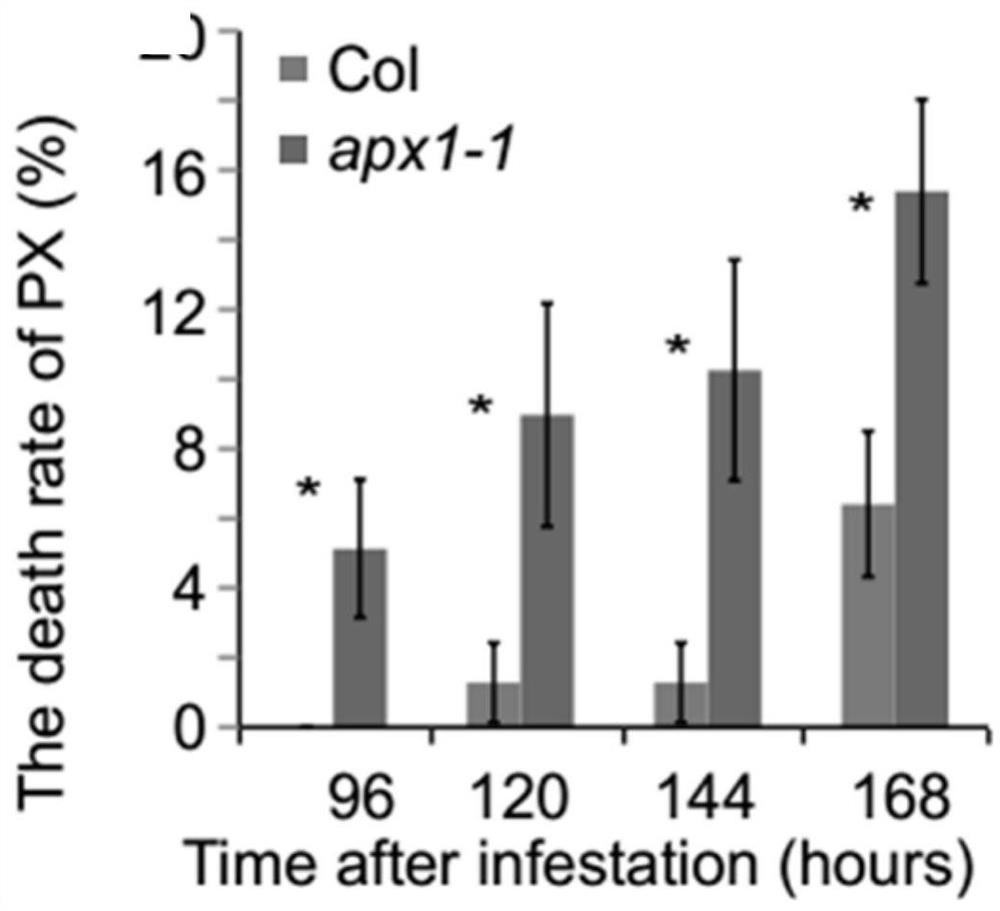A gene apx1 that enhances plant resistance to lepidopteran pests and its application
A lepidopteran and gene technology, applied in the field of genetic engineering, can solve problems such as weakening the effect of pest control, and achieve the effect of significant repelling effect, increased enzyme activity, and increased larval mortality
- Summary
- Abstract
- Description
- Claims
- Application Information
AI Technical Summary
Problems solved by technology
Method used
Image
Examples
Embodiment 1
[0023] 1. Materials
[0024] The methods used in this example are conventional methods known to those skilled in the art unless otherwise specified, and the reagents and other materials used are all commercially available products unless otherwise specified.
[0025] 2. Method
[0026] 2.1 Cloning of Arabidopsis APX1 gene
[0027] 2.1.1 The wild-type Col-0 variety of Arabidopsis thaliana was used as a material to extract RNA, and the extracted total RNA was reverse-transcribed to synthesize the first strand of cDNA, which was used as a template for PCR amplification.
[0028] 2.1.2 Use designed specific primers:
[0029] APX1-F: (5'>GGTTGAAGGATTTTG<3')
[0030] APX1-R: (5'>ATTGTGGGAGGATGGTGCC<3')
[0031] Carry out amplification, obtain the gene fragment of 666bp (electrophoresis result such as figure 1 shown), connected to the T cloning vector PEASY-T5 simple vector, obtained T5-APX1 transformed into Escherichia coli, picked positive clones and sequenced, the sequencing ...
PUM
 Login to View More
Login to View More Abstract
Description
Claims
Application Information
 Login to View More
Login to View More - R&D
- Intellectual Property
- Life Sciences
- Materials
- Tech Scout
- Unparalleled Data Quality
- Higher Quality Content
- 60% Fewer Hallucinations
Browse by: Latest US Patents, China's latest patents, Technical Efficacy Thesaurus, Application Domain, Technology Topic, Popular Technical Reports.
© 2025 PatSnap. All rights reserved.Legal|Privacy policy|Modern Slavery Act Transparency Statement|Sitemap|About US| Contact US: help@patsnap.com



